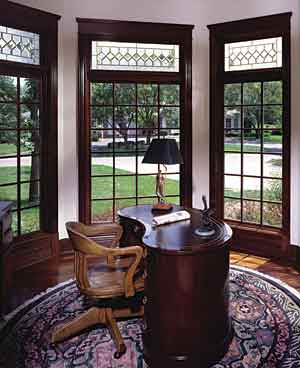Advancements in the manufacture of wood windows and doors
Water-based coatings
Factory prefinishing does require a level of responsibility by the manufacturers for safety reasons. The concern lies in the release of volatile organic compounds (VOCs), which are found in solvent-based coatings.
Water-based coatings are systems in which water is the primary "solvent," and are considered environmentally friendly as water contains no VOC-therefore the move toward water-based solvents.
 |
| Creating the room of your dreams is made possible by designing beautiful wood windows in a variety of options including alder, mahogany and cherry. |
Although research into water-based coatings began in the 1950s, it wasn't until recently that technical progress has enabled the development of water-based coatings that closely simulate the high-performance characteristics of other solvent coatings. The recent advances allow water-based coatings to offer good clarity and excellent resistance to yellowing.
The significant advantage of water-based solvents is the low VOC levels. In addition, these coatings also offer soap and water clean up, which results in significant savings to finishers by eliminating the need for, and cost of, cleaning solvents.
Lower solvent levels also improve the environmental working conditions. Most of the water-based coatings in use today contain a synthetic polymer, which largely determines the coating's final properties. Variations in the multiple synthetic polymers available to formulators provide considerable latitude in developing water-coating systems with differing physical properties.
In the future, continued advances in water-based technology are expected to produce ever-superior coating systems and to continue to improve application and performance characteristics.









